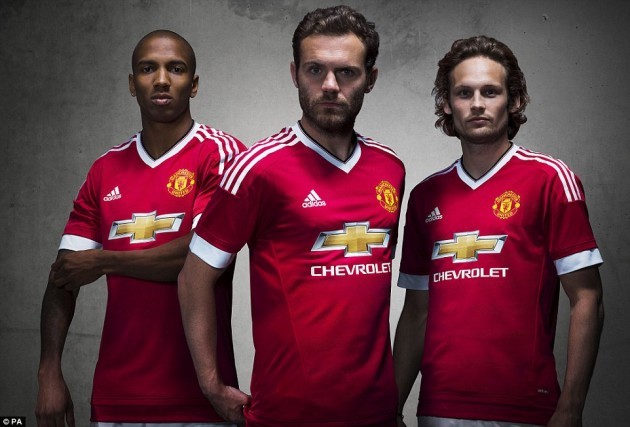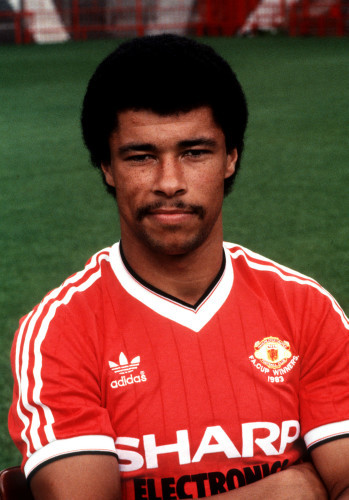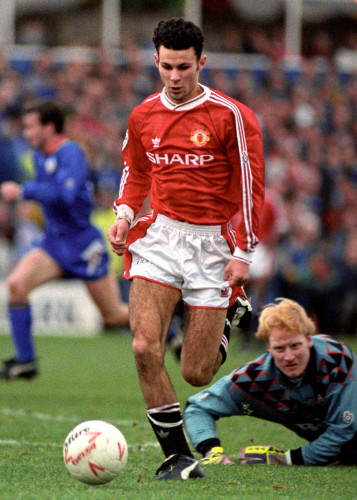Updated at 14.52
LAST WEEK SAW the much anticipated and highly-publicised release of the new adidas Manchester united kit with the German sports giant replacing Nike as the official kit manufacturer.
Nostalgic United fans will not need reminding that the last time a United shirt was adorned by the famous adidas trefoil (back then adidas had only one logo) was between 1980-1992.
This was a time when the romance of the beautiful game was intact, when it was untainted, by and large, from the huge commercial reward of salivating sponsors. There was no Sky TV money, no live streaming, no MUTV, no match selection on demand.
Fans were lucky to see their team play live once in a blue moon on ITV’s The Big Match, other than that you were confined to the highlights. There was no Champions League, no stadia naming rights, no corporate hospitality suites, no megastore (the Manchester United club shop was a portacabin) and no multi arrangement commercial sponsorship deals.
Back then even copyright law seemed to be laissez-faire, I remember having an O’Neill’s Manchester United jersey rather than having the official one; it was legally for sale in sports stores throughout the country alongside the adidas ones! It was the best of times, it was the worst of times.
Back then, a shirt sponsor could proudly, albeit ridiculously, display their whole array of electronics in the official team photo á la Sharp Electronics:
Adidas have reportedly paid a mind-boggling £750million in a 10-year deal, making Nike’s previous £23m-a-year deal look like chump change. But is this good business, good marketing, or both?
Given the going rate for kit manufacturing deals it’s a statement of intent by Adidas, a brave move showing how badly adidas wanted this deal. This deal even dwarves other mega club shirt deals such as Real Madrid’s at £34m a year for eight years, Bayern Munich’s 15-year deal at £43m a year and Chelsea’s £30m a year 10-year deal, all coincidentally adidas kit deals.
And what about Barcelona, how could they be expected to survive with a mere £28m a year for 10 years from Nike? On the face of it, given the going rates for other clubs of similar stature, this looks like a large gamble, particularly given that United have not won a single trophy in two seasons and failed to qualify for the Champions League last year. So at a time when United appear to be on a downward trajectory they manage to pull off the biggest kit deal in history.
It’s not surprising given the club’s commercial nous, this is the club who struck a £47m-a-year shirt sponsorship deal with Chevrolet, replacing AON’s £20m a year deal. But wait, it gets better. At the same time, they managed to maintain AON as official sponsor of their training kit and the Carrington training ground. So AON essentially paid the same as before for everything except the official kit, allowing United to sell that for a 135% premium.
Manchester United had allegedly told suitors that starting bids for their kit deal were a minimum of £65m a season, so Nike walked away, adidas stepped up and the rest is history. Firstly, does this make commercial sense? Manchester United replica shirts consistently sell around the 1.5 million mark every year over the past five years. If we assume average jersey price of £50 (slightly cheaper if bought online and more expensive if bought in the official Manchester United Megastore or adidas stores) and we assume a retail margin of 25% mark-up that means adidas could make around £40 on a shirt.
I have no idea on the cost of materials but let’s assume it costs no more than £5 to make at scale (it’s made in Vietnam). Now if we assume that this rate of sale (1.5m shirts annually) continues, which is conservative given the growth of Premier League football to new markets , and we assume a moderate inflation of 5% yearly on kit prices then adidas' £750m investment will have recouped £660m in jersey sales alone after 10 years.
Now let’s look at peripheral branded wear, training tops, tracksuits, base layers, etc etc.
United have 659 million fans worldwide (source BBC.com) so if we assume that just one in every 500 of these fans buys any adidas official Manchester United piece of kit apart from the jersey and adidas only make £10 profit on this that’s now worth a compound profit adjusted for inflation of an additional £151m over the duration of the deal. So purely on Manchester United-related merchandise alone adidas will wash their face and this deal will make a profit as peripheral sales (which even as a conservatively estimate) will be huge.
And it has already started, Adidas have taken a bit of stick from people about their, ahem, plunging neckline lower cut female fan shirt. Everyone is up in arms about it, unfairly so if you ask me.
What’s the problem with supplying choice? Female fans who don’t want the men’s jersey now have a choice; it’s not mandatory, female fans who would have never worn the men’s jersey now have a choice, simply buy whichever one you prefer.
At least now female fans who would have never worn the men’s jersey now have a choice. And what’s even more interesting is that this has cause a social stir for Adidas on the Manchester United kit. Practically every big team, (including Arsenal, Chelsea, Real Madrid, Barcelona and Bayern Munich) has a female fit version of the replica shirt; all are more tailored with a lower neckline. But nobody cared before now, why? Because there was never as much publicity around a new kit as there has been around this one, more good news for Adidas as there’s no such thing as bad publicity!!
This deal makes sense on a commercial argument alone and to this point I have only counted the jersey sales and official Manchester United merchandise. From here on the marketing and non-Manchester-United-related impact is all pure icing on the cake. The publicity alone surrounding this new kit has been nothing short of phenomenal, as confirmed by the female jersey fiasco.
What value can be placed on the brand equity increases adidas will enjoy through all the marketing hype surrounding an association with the biggest club in the world? And outside brand equity, what’s this worth to adidas in incremental sales of regular products? How many United fans will now buy into the adidas brand for non-United related sports apparel? How many United fans will buy Adidas over Nike now?
Think about it, if only 1% of the 659m Manchester United fans buys just one pair of £50 adidas trainers a year that otherwise would have been a Nike purchase then it’s now worth an additional £415m in incremental revenue.
It seems that the Manchester United brand is bulletproof, despite back-to-back trophy-less seasons. But adidas know what they are doing here and it’s not a case of being duped by a savvy Manchester United corporate team, on the contrary. It may well be the case that adidas, despite what initially looked like a risky venture paying £75m-a-year for something Nike had paid £23.5m a year for in the previous deal, have made a shrewd investment and may have got this deal on the cheap in the long-term.
And if early sales figures are any indication, then this year could be the biggest year in United’s history for shirt sales. Herbert Hainer, Adidas’ chief executive, has revealed that sales of the new kit have broken all previous sales records for a shirt launch with sales at the official megastore up almost 50% up on the previous record and online orders four times higher than the previous record for any kit launch.
Adidas are expected to reveal United's two away kits on 11 August. There aren’t many teams with the global footprint of Manchester United but you can rest assured that once all significant existing kit deals are due for renewal, the United deal will have set a new precedence in Premier League sponsorship.
Dave Winterlich is Chief Strategy Officer at Dentsu Aegis Network & Carat Ireland as well as being a massive Manchester United fan



